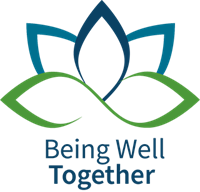 The ACR® is committed to supporting your well-being. Resources like these, curated by fellow radiologists, are designed to help identify activities that can enhance your well-being and mitigate burnout. These resources are part of the ACR Radiology Well-Being Program, which includes access to the Well-Being Index for ACR members and an ACGME-aligned well-being curriculum for program directors.
The ACR® is committed to supporting your well-being. Resources like these, curated by fellow radiologists, are designed to help identify activities that can enhance your well-being and mitigate burnout. These resources are part of the ACR Radiology Well-Being Program, which includes access to the Well-Being Index for ACR members and an ACGME-aligned well-being curriculum for program directors.
Additional support guides are available on topics including mentorship, resilience, conflict resolution and more.
Objectives
The selected literature, activities and other resources can provide you with knowledge and tools to enhance interpersonal communication skills and help reduce symptoms of burnout. You will:
- Learn how effective interpersonal communication skills and increased communication can lead to a decrease in burnout
- Enhance interpersonal communication skills
- Establish habits/practices to increase opportunities for interpersonal communication
This is meant to serve as an introduction to radiologists who hope to learn more about why communication is important, as well as effective and appropriate interactions. The resources will also help enhance skills for radiologists who routinely communicate with patients.
Resources
Article: How Radiologists Can Benefit From Direct Communication With Patients
The article explores the unique benefits radiologists can derive from communicating with patients. This article will help the reader understand the positive impact of regular patient interaction, not only on patient satisfaction, but also on many aspects of their job as a radiologist.
Activity Time: 20 minutes
Article: Doctor, Shut Up and Listen
This New York Times op-ed article highlights some statistics and trends regarding poor physician communication with patients, the consequences of flawed communication and how a hospital developed a program to improve doctors’ communication with their patients.
This will help you better understand the potential negative impact that poor communication can have on patient care and how training can lead to better communication and improved patient outcomes/satisfaction.
Activity Time: 5–10 minutes
Presentation and Exercises: Radiology Communication Skills Training Module
This is a PowerPoint training module on communication skills and is geared toward radiologists. This module gives the participant a quick overview of why communication is important, the essential elements of communication, and a step-by-step guide on communication emphasizing patient interaction, as well as information on radiology-specific scenarios.
Activity Time: 15–20 minutes to complete. Review of additional resources/references offered in this module will take more time.
Empathetic Listening: AMA STEPS Forward Online Learning Module
This online training module offered through the American Medical Association (AMA) Ed Hub and STEPS Forward focuses on how to enhance the patient experience and interpersonal communication through empathy.
The module highlights the five steps required to listen with empathy, answers questions about empathetic listening and provides tools to help implement empathetic listening in your practice. As an added benefit to completing this activity, the participant is eligible for 0.5 CME Credits through the AMA.
Activity Time: Approximately 30 minutes to complete. Review of additional resources/references offered in this module will take more time.
Activity: Daily Patient Rounds
This activity will increase communication opportunities with patients and hopefully improve not only their experience and satisfaction, but also yours, all while helping to avoid burnout.
Although “free” time in the world of a busy radiologist is either unheard of or at a premium, even a quick interaction with a patient can go a long way in helping to enhance your day-to-day job. This is something that breast and interventional radiologists do on a daily basis, and all radiologists should do the same. This could be simply meeting a patient before or after their imaging study to introduce yourself as a physician who specializes in reading imaging studies, or a more involved experience, such as detailing the findings of an ultrasound exam. The options and opportunities are endless and require only a small amount of time, and can be performed during a planned break. Make a goal of doing this once a week, with the ultimate goal of doing it once a day.
Regularly participating in activities such as these will aid in fine-tuning communication skills and eventually lead to establishing habits that enhance patient- and self-care. These meaningful interactions can help build a sense of purpose and being part of a team, while physically providing a break from the daily grind and hopefully improving job satisfaction.
Activity Time: The activity will take no more than 5 minutes.
 The ACR® is committed to supporting your well-being. Resources like these, curated by fellow radiologists, are designed to help identify activities that can enhance your well-being and mitigate burnout. These resources are part of the ACR Radiology Well-Being Program, which includes access to the Well-Being Index for ACR members and an ACGME-aligned well-being curriculum for program directors.
The ACR® is committed to supporting your well-being. Resources like these, curated by fellow radiologists, are designed to help identify activities that can enhance your well-being and mitigate burnout. These resources are part of the ACR Radiology Well-Being Program, which includes access to the Well-Being Index for ACR members and an ACGME-aligned well-being curriculum for program directors.